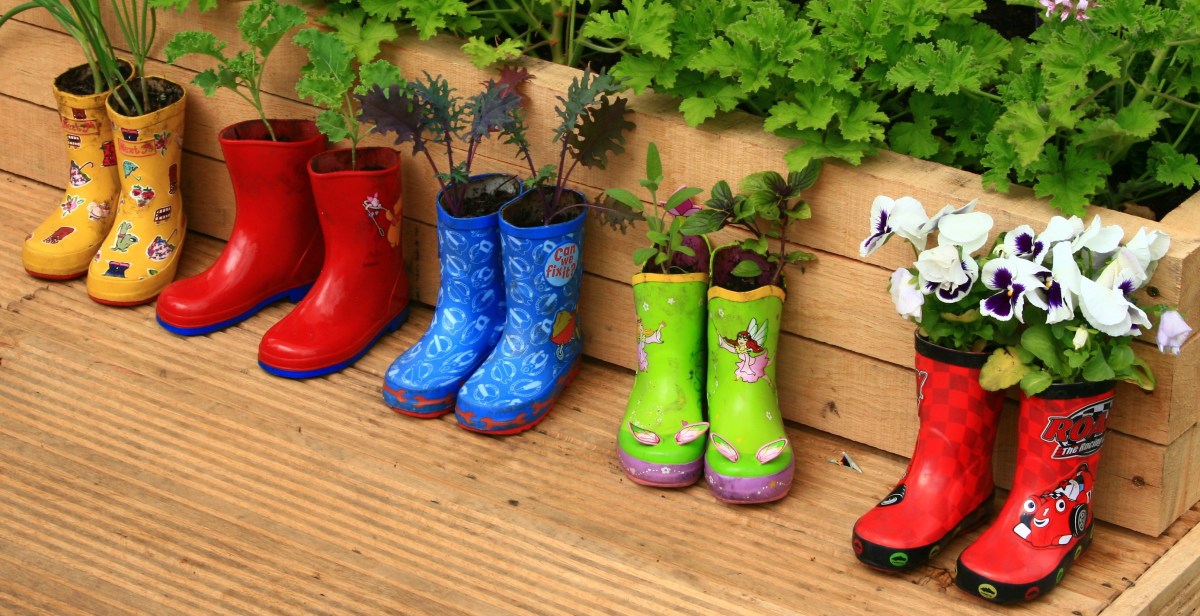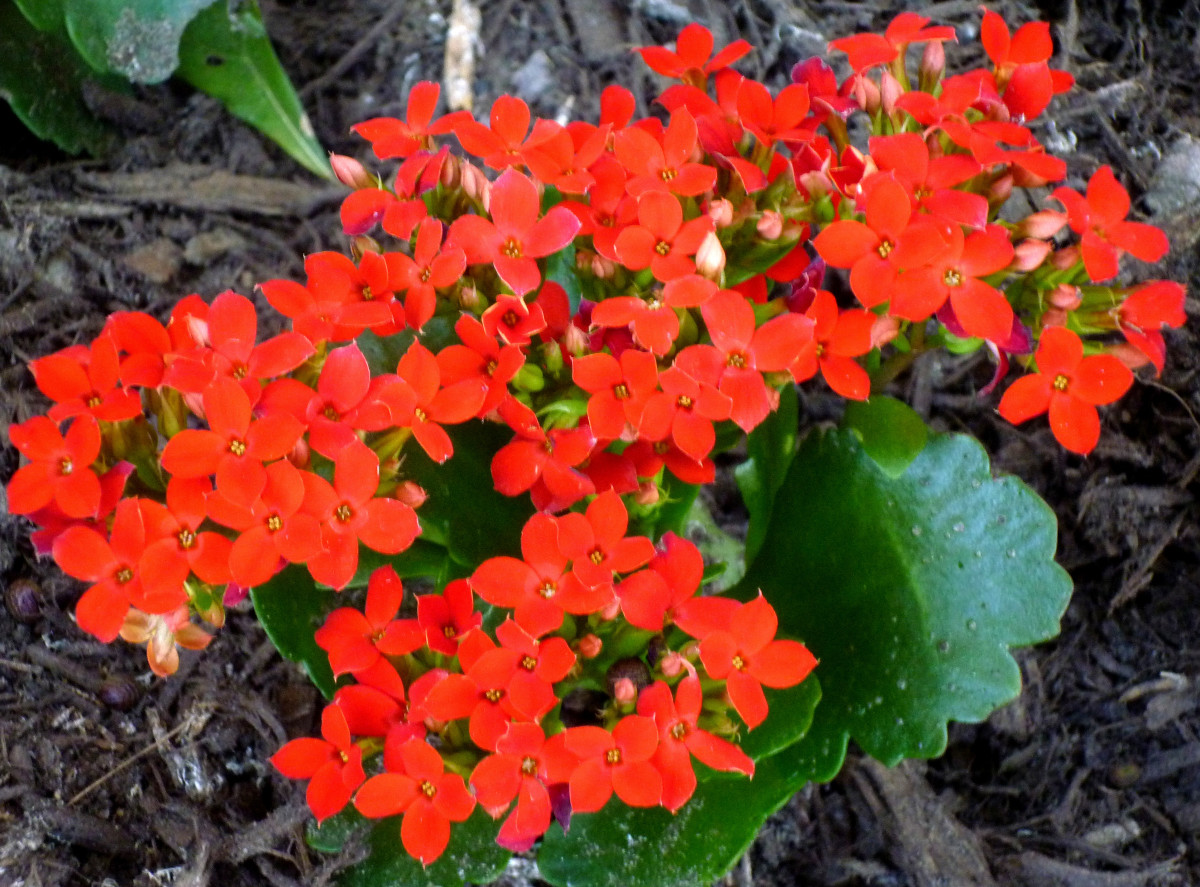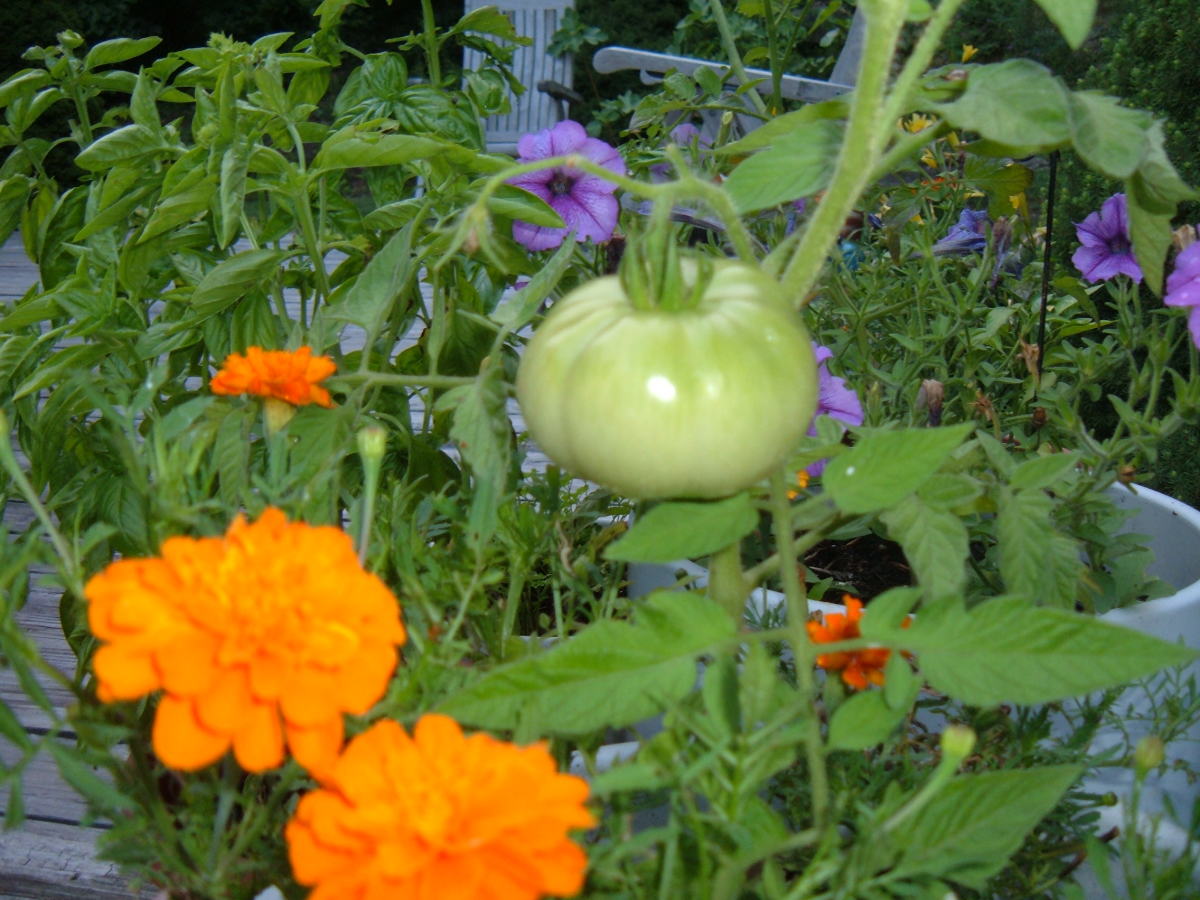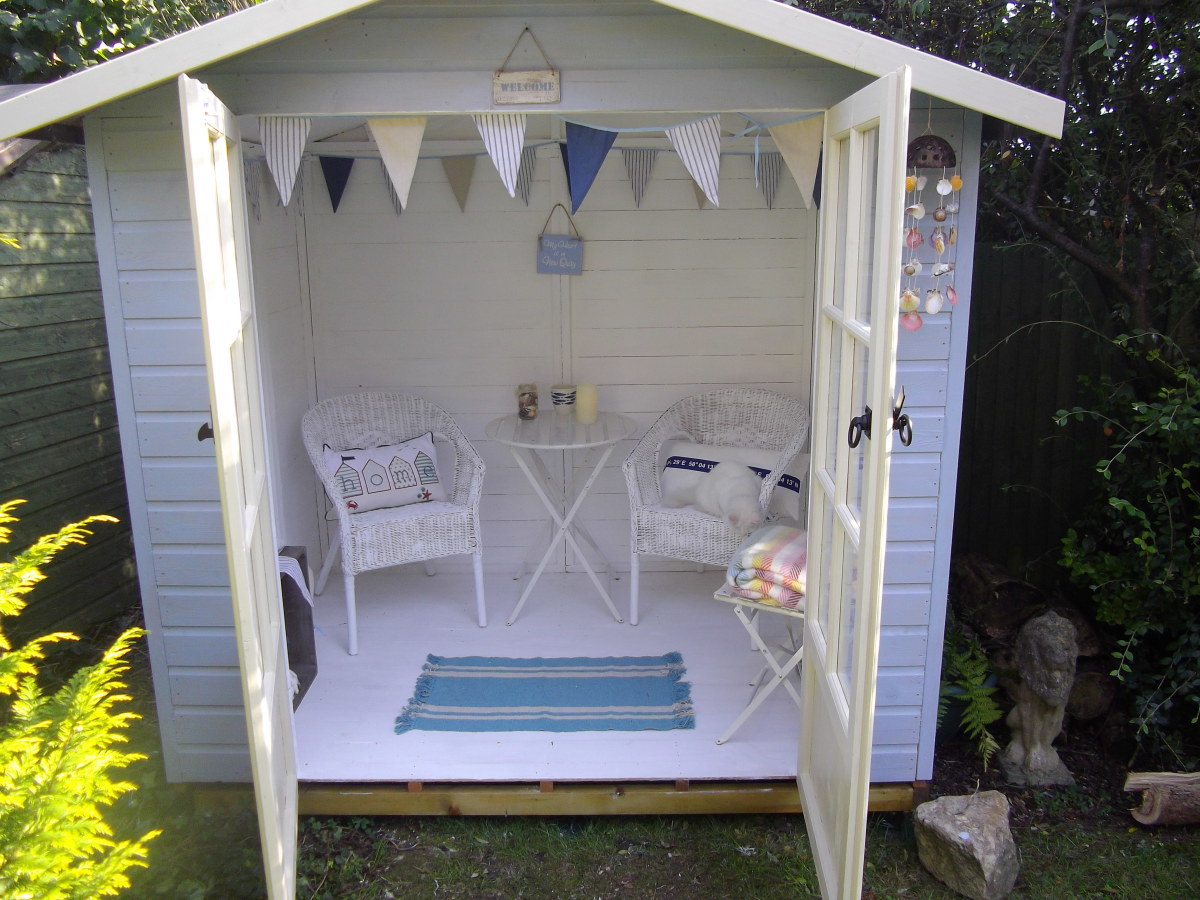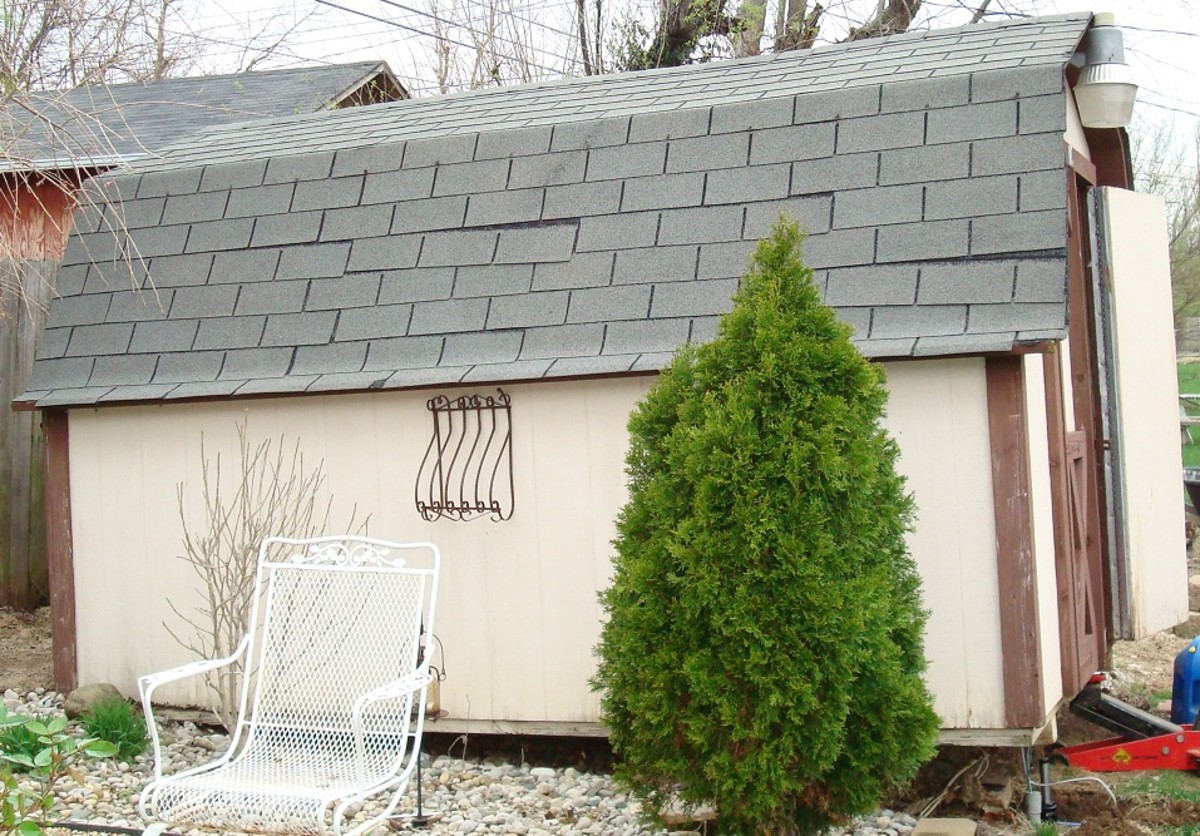The unplanned garden ~ let it grow!
My unplanned garden.
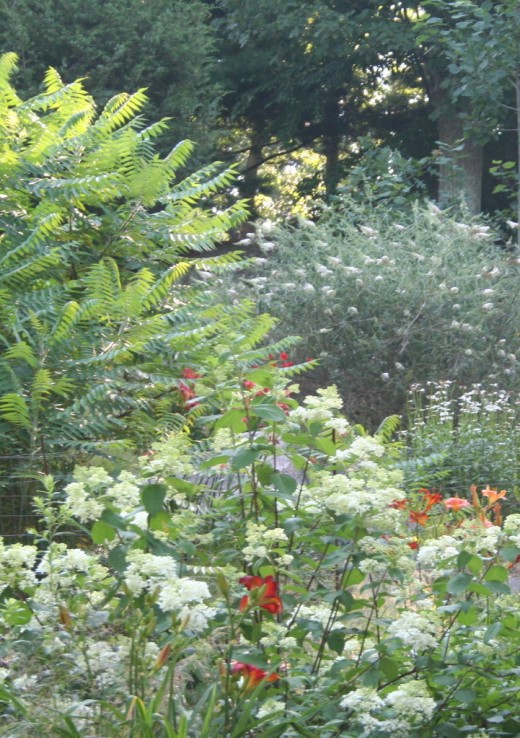
Where to start with un-landscaped ground.
When I first started gardening, I had really no clue where to begin. I was raised on a home farm. You'd think I would have learned how to plant a successful garden. As I found out, vegetable gardening is not the same as planting flowers.
However, with a little bit of knowledge and a lot of hard work, your gardens will manifest in magnificent ways!
Before I moved here, I worked full-time, averaging over 60 hours a week at times. Gardening wasn't something I thought about or had much time for, even though I grew up where gardening was a way of life.
Before I had gardens, the yard was filled with bare spots from being a former cow pasture. Rumor had it that the location was used as an informal town dump at one time. Glass covered the dull brown dirt surface. Every rainstorm would wash up more glass. I collected five full garbage bags of glass before I could even consider walking outside barefoot.
Soon after all my efforts showed improvement and green grass started filling in the dirt patches, my first child was born and I had to put my gardening plans on hold again.
Trees, flowering shrubs, natural foliage, all work together to create a masterpiece.
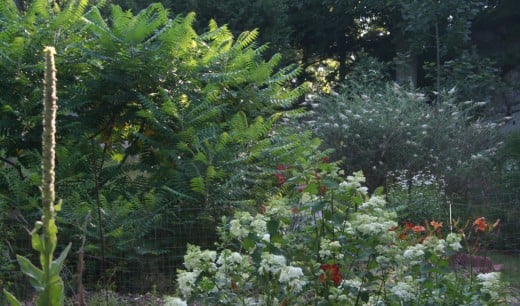
Try an unplanned garden and let it grow!
Gardens take a lot of time to plant and nourish. A pristine well-planned garden involves dedication and hard work.
While my first intention was to create a garden that I could work on as a hobby, life got in the way. I got busy.
I started out by creating a few flower beds around the property. I also noticed some natural flowers and seedlings that I wanted to keep around. My yard started to shape up but wasn't filling out all that much. It would have been too costly to buy as many flowers as needed to fill in the yard.
I found a couple of stores that carry specific types of trees and flowers. I created a beautiful garden around a large rock in the back yard including a small flowering tree. The neighbor crossed my property line where there is an opening in a stone wall and mowed down my new plantings with his ride-on mower. I was heart-broken and totally devastated. The time it took me to plant all of that plus the money invested in it was now gone. I just happened to have a neighbor that didn't like flowers and he openly stated that he didn't want to have to look at them in my yard from his property side. (Unfortunately, this happens more than you would believe!).
Disheartened, I gave up. I decided not to try any more. I planted an occasional flower or bought new phlox when I needed to fill in the area around my front retaining wall. My long-awaited hobby was over before it even got started. I was no longer interested in gardening because being outside reminded me of that awful moment watching all of my new plantings being torn up and spit out around the yard by the mower blade.
But then, something magnificent happened. The following spring, I was raking leaves and noticed some tiny plants covering some of the ground that was once bare dirt.
Unknowingly, the neighbor's mower had spread the seeds from the flowers he mowed down. My yard has never been the same since. I now have all the gardens I've ever wanted.
Suddenly, over the next year, I had privacy where I never had any before.
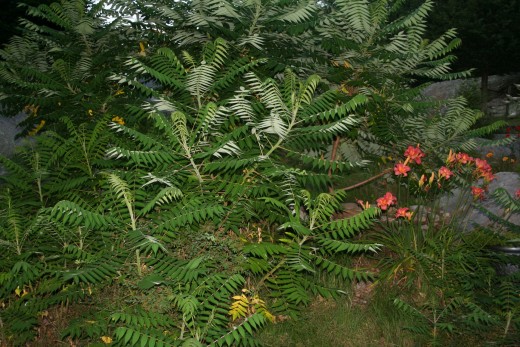
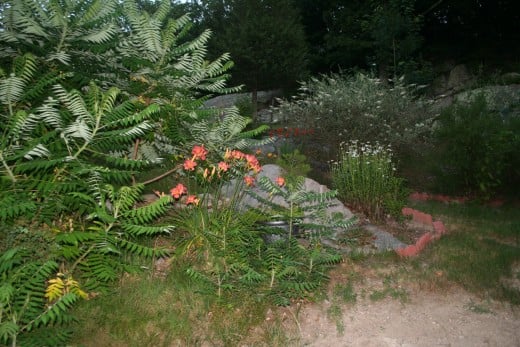
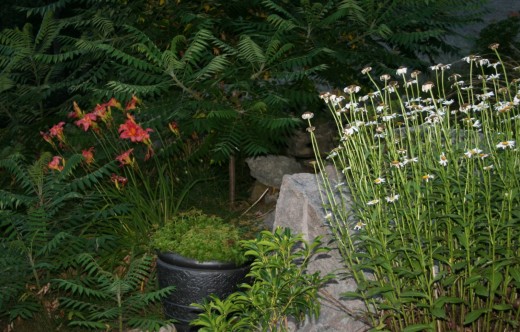
Gardening in containers.
The left side of our back yard is all hill. There are several old stone walls surrounding the property. They are peeking out between the trees and flowers planted nearby.
I like to decorate the yard with containers that blend in nicely and provide homes to flowers that wouldn't prosper if planted directly in the ground.
Tips on how to get started!
How to start landscaping after moving in to a new home!
- Assess the yard around your home.
- Do you have stone walls bordering your property? Do you have a fenced-in yard? If you want a fence, start there first. It will be much easier to install a fence when the ground is not covered by foliage and flowers that will be destroyed by fence construction.
- Do you have bare patches of ground where you need to plant grass? In some situations, you may have no choice but to hire a professional landscaper to lay down all new grass. You can also plant grass seed yourself. It's as easy as spreading around some grass seed and waiting for the rain to establish it. Mowing often helps it to grow faster and spread.
- Think about where you want to plant your garden? Do you want an unplanned garden and will be satisfied where anything grows? Or do you want a more sophisticated look? Perhaps you want to plan your garden by creating garden beds around the yard which will be easier to mow around.
- I recommend picking up a book on landscape and design. If you are looking to plant specific types of flowers or trees, you might want to invest in more than one book. My library consists of several landscaping books and several books specifically on certain types of flowers. In fact, it is helpful to have information on what types of plants grow specific to your zone. It's really frustrating to spend money on plants to find out they won't come back after the next season because they can't survive the climate in your area!
- Once you decide what you want, keep in mind that landscaping can be very costly even when you do it yourself.
- To save some money, plan your garden on already established wild flower areas. We planted bleeding hearts among the wild daisies. We planted hosta flowers bordering the rock bed by the woods. Once the plants were established, they blend in so well they look like they've always been there.
- Draw a plan. Take a piece of paper, sit in your yard, and envision what you want your yard to look like when you are done. Don't be discouraged if you can't draw. It doesn't have to be perfect.
- Consider what types of plants you want in your yard. Do you want a mixture of trees and flowers? Do you want a garden that blooms part of the year or all of the year? Do you want a garden that has cascading blooming times?
- When you are ready with your design, go out in your yard with a shovel. Trace the area where you envision your garden and start making a line in the ground with your shovel. Even if that means digging up some pre-existing grass to help you map out where you will start planting.
- Start a list of what you want to do and in what order. For example, if you have more than one section of yard where you want to plant, start with the most visible portion of your yard. Beautify first what others can see. For most people, this means start planting in your front yard.
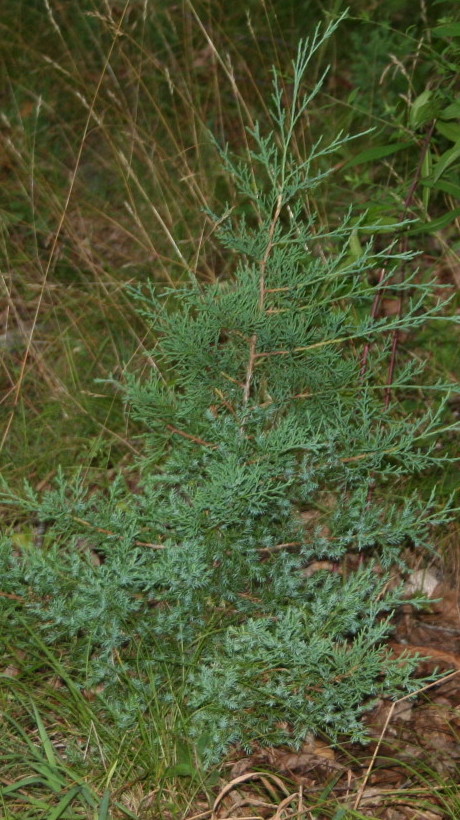
Free trees.
Sometimes nature gives us free trees. We protect little trees from our lawn mower and let them grow. They make beautiful borders and give us natural privacy.
Finding the time to garden.
I know it's not easy to find time to garden.
When my daughter was an infant, I read books and a lot of them. I studied online information about various plants. I connected with websites that sell plants and kept my own database of what plants I would eventually want in my own yard.
I started out by planting phlox around my front retaining wall.
Each year I bought more plants. Phlox come out in the early sprint. You can find them in hardware stores or plant stores. They usually sell out quickly.
They spread so keep that in mind when you are planting them. They are not a good plant to try to keep contained.
Tips about creating flower beds.
Don't expect gardens to fill in over one season. Plants expand and cover more ground over time.
- Before you start a flower bed, consider covering the area with garden paper. Cut holes where you intend on planting a flower. Then cover up the ground paper with mulch.
- If you are using flower bulbs, they will come back year after year. However, wild animals such as skunks will dig up and eat the bulbs regardless of how strong the garden paper is.
- Some bulbs such as gladioloas need to be dug up and stored in a dark place such as a garage or basement. My great-grandparents grew and sold gladiolas almost a century ago in town here. I planted them a few years ago. I didn't heed advice about digging them up. The never grew back.
- If you are planting a flower bed near your house, consider the height of what you are planting. Measure the space you have and plant only small trees, shrubs and flowers that won't grow to massive and take over the whole front.
- Also, you don't want your flower garden to look to bare. Consider some dwarf decorative pine trees that will add interest to your garden.
Raspberries and wineberries seen here grow wildly.
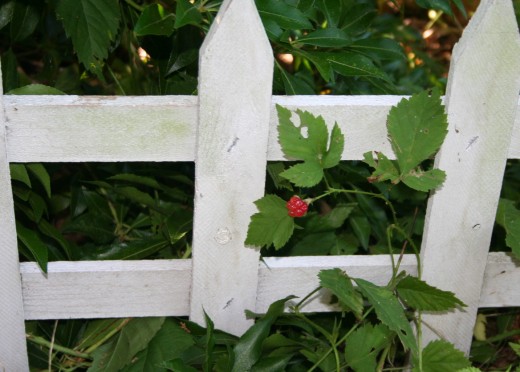
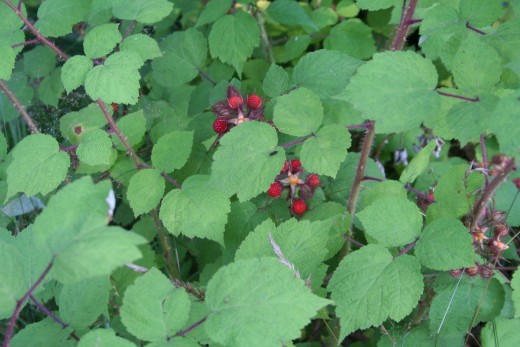
Lavender plant.
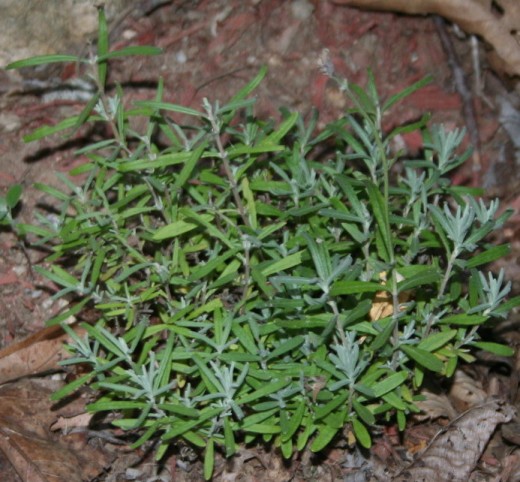
Don't be discouraged.
I've spent good money on plants that have never blossomed or come back after winter.
This lavender plant has new buds after I almost pulled it out of the ground for lack of growth.
Planting annuals.
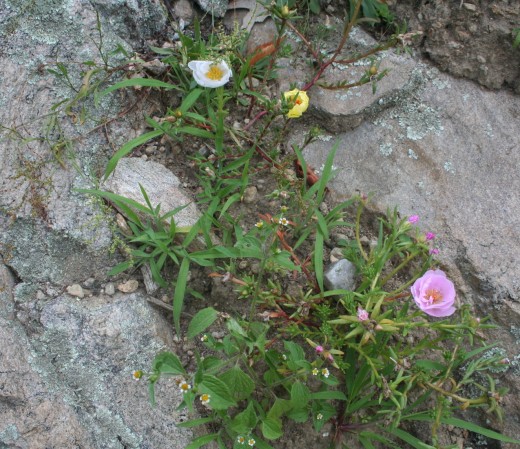
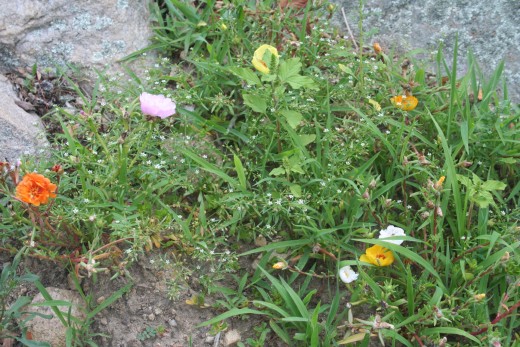
Annuals and perennials.
When my grandmother was alive, I planted a flower garden for her every year that she could look out at through her kitchen window. It wasn't that big. It was under a shade tree so I used mostly impatience. Annual flowers are great for practicing with before preparing your final perennial garden.
These portulaca flowers are annual plants that only grow one season.
If you are looking for plants that come back every year, you need to invest in perennials.
Portulaca flowers are some of my favorite annuals. They look like roses when they bloom. They are hardy plants that really thrive on little attention! They loved this rocky area I planted them in last year.
By the end of summer they had spread and were sharing their space with other flowering weeds.
These wild flowers grow all over.
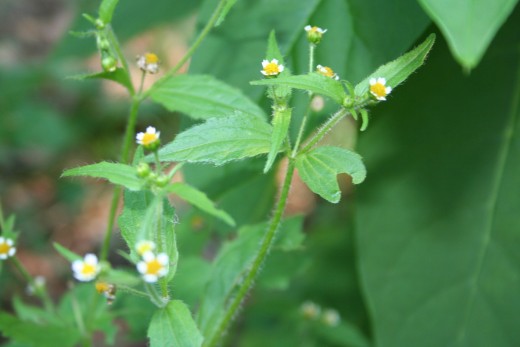
This area was once a bed of dry dirt. After planting one small tree, nature took over and gave us ferns!
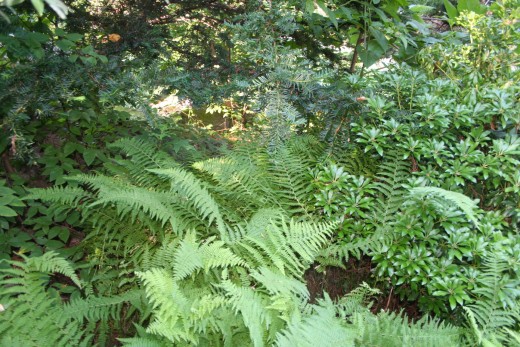
Year after year your garden will fill in your yard.
Every year your gardens will start to fill in.
A decade ago, I started planting my gardens. I never imagined how filled my yard would become with beautiful flowers and trees.
It takes a lot of work to keep up with gardens because natural weeds like bittersweet will start to take over. Bittersweet is fast-growing and climbs up trees. It can take over your whole yard if you let it.
Hosta Flowers make great borders around rocks. They come back year after year. Bees love their flowers.
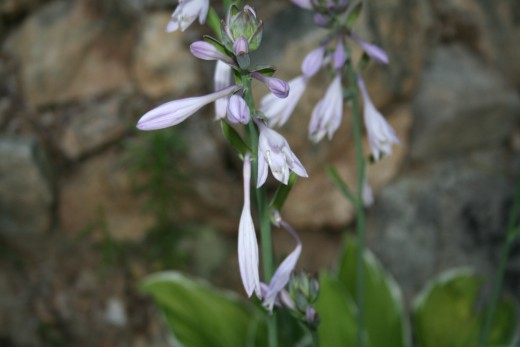
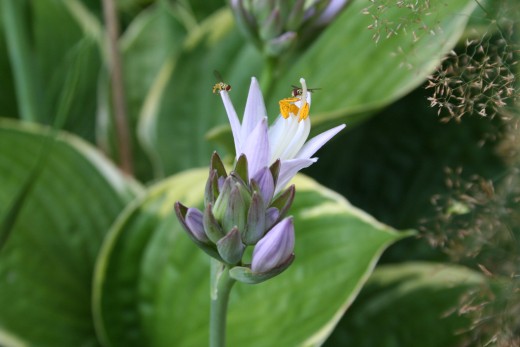
Wild berries attract birds.
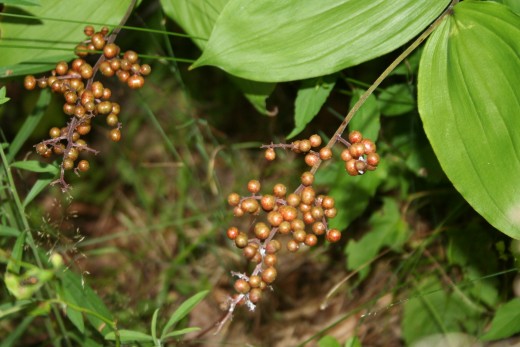
Gardens attract insects, bees, wildlife and birds.
Keep in mind that once your garden starts to fill in around your home, it will attract insects.
We have many varieties of butterflies that visit all of our four butterfly bushes and flowers.
We also have had many bee problems. A white-faced hornet nest found home in a cedar tree. Just recently a yellow jacket nest made a home out of a rock on the side of our retaining wall.
One time while weeding my vegetable garden, I plucked a root attached to an underground yellow jacket hive. Within seconds I was stung six times. I jumped over the chicken wire fence and ran to the back. The bees chased me the entire time, stinging more. Bumble bees will also make ground nests identified by large holes.
Once you start to have ground covering and plants that spread or hang, many other types of wildlife such as mice and snakes will also make home to the various hiding spots.
Hummingbirds will start to visit your gardens. Robins, blue jays, cardinals, finch, and other birds will start making nests near your home. Tall bushes make nice hiding spots from hawks!
Birds will feed on the wild berries that start spreading in your unplanned garden.
An empty bee's nest hangs off the side of my retaining wall.
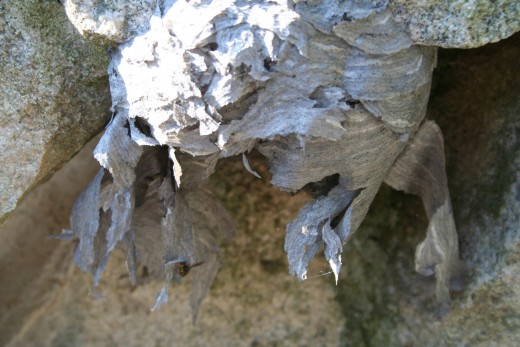
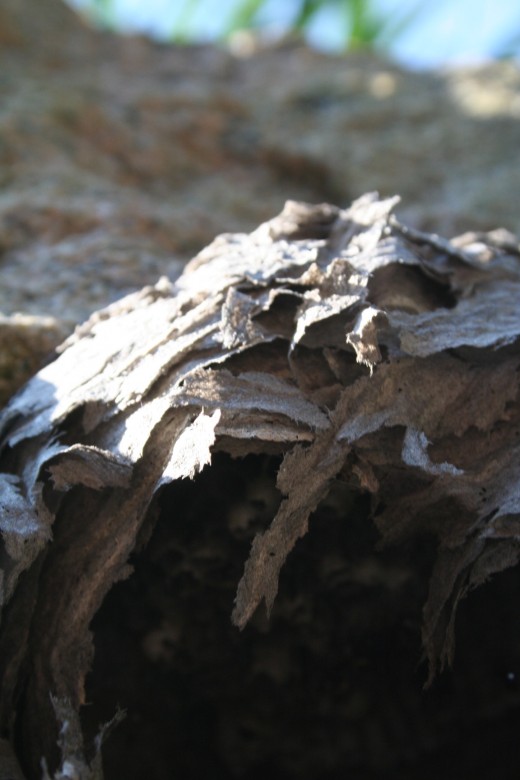
The dragonfly.
We have dragonflies that love hanging around our flower-filled yard.
When we hook up the sprinkler, the dragonflies come out in full force dancing around the water.
It takes patience to capture a dragonfly in a photo. This one seemed to stay until I had finished photographing this hosta flower.
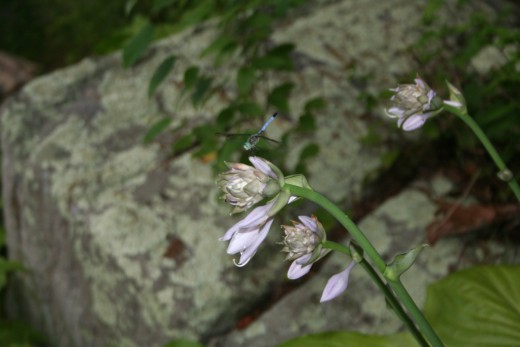
Challenges facing the unplanned garden.
Once your gardens are established and continue to grow, you will have to work hard to keep the bittersweet vines from choking out trees and other plants.
Raking around trees to remove dead leaves also becomes a seasonal chore. Although some leaves can be beneficial to plants by protecting the roots in colder months.
Working on your gardens in summer months can become unpleasant because of mosquitoes and humidity.
However, as a trade off, flowering weeds and natural plants will start to grow and beautify your yard more than you ever thought possible!
Adding color to your yard with lilies.
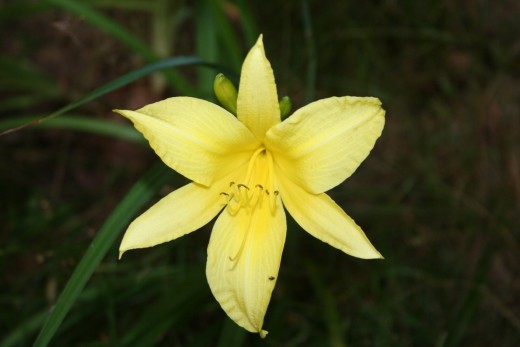
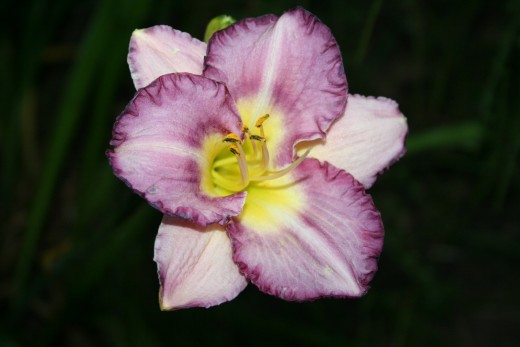
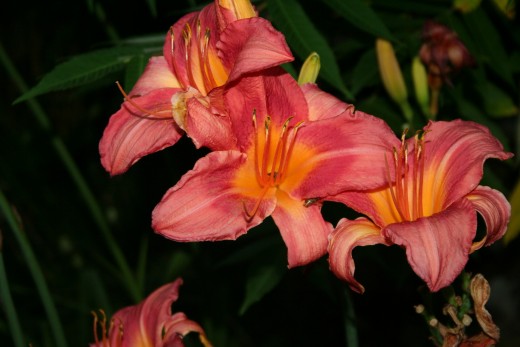
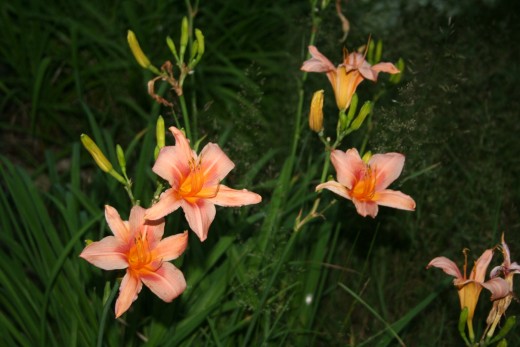
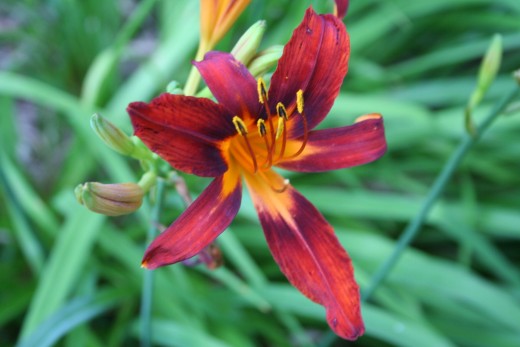
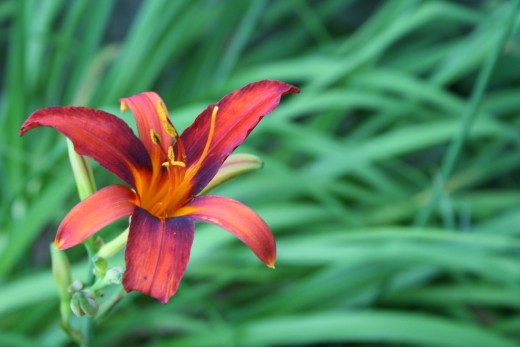
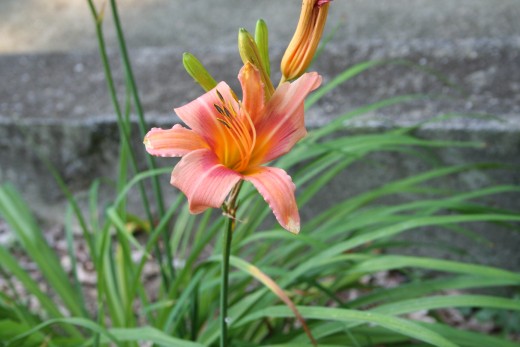
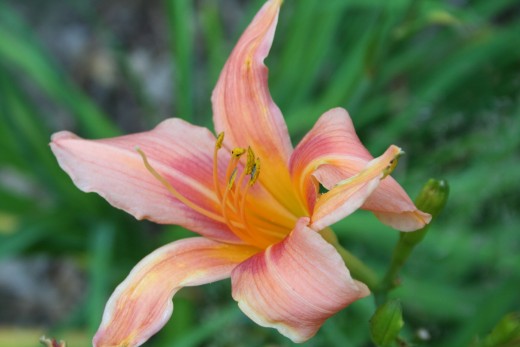
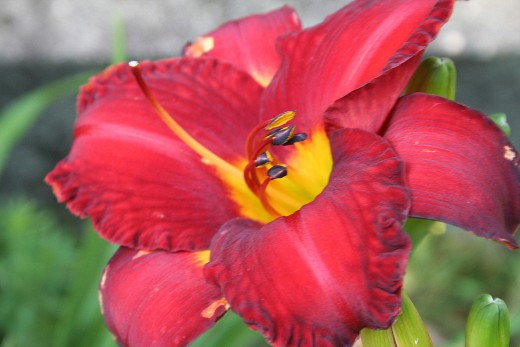
Predictable plants.
The lily.
The most predictable plants come back year after year. Sometimes they spread. They make lovely borders.
There are several types of lily flowers. We have day lilies, tiger lilies, even Easter lilies that grow in early spring around April.
Lily flowers come in all colors.
Some lily flowers like the day lilies are short.
Tiger lilies grow taller and stand out with their beautiful vibrant colors!
My grandmother had tiger lilies in her yard under an apple tree for years! They can grow in shade or direct sun.
Some species of lilies close up at night and blossom again in the sunshine.
Lilies are timeless. They come back year after year.
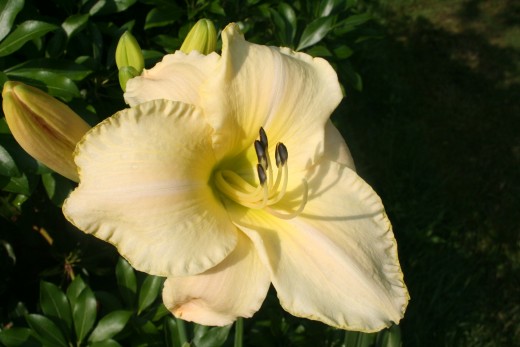
The butterfly bush.
We have four butterfly bushes in our yard.
Butterfly bushes attract a variety of nectar and pollen loving insects. I have one planted on the side of my house which provides privacy.
The hummingbirds love flying around the house in circles seeking out the sweet nectar.
Butterflies come in all colors to sip the sweet nectar from the four butterfly bushes in my yard.
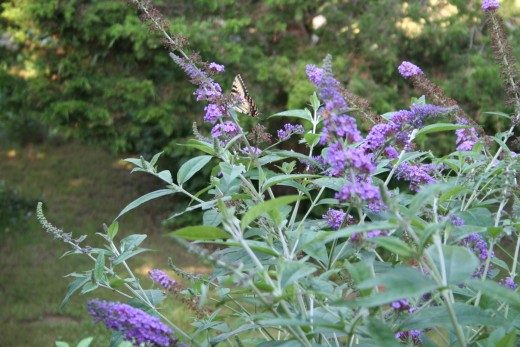
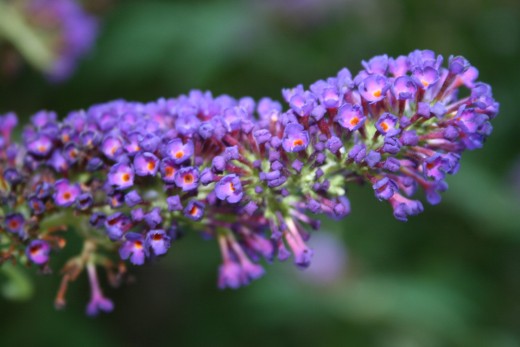
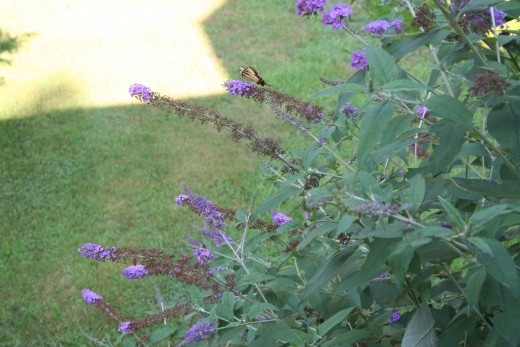
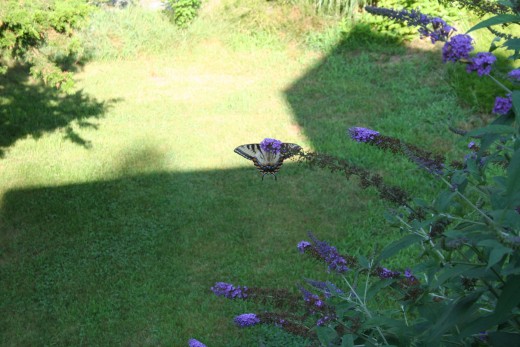
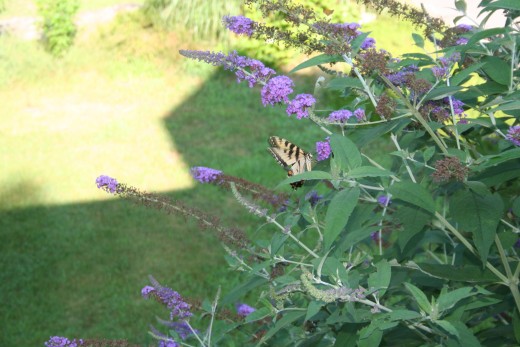
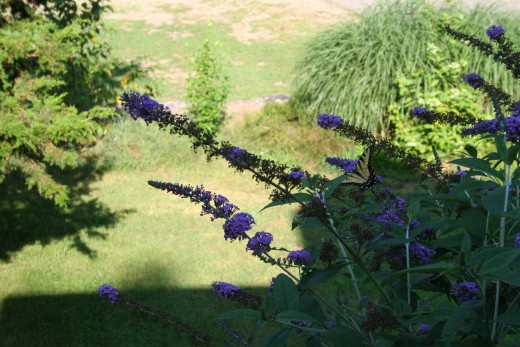
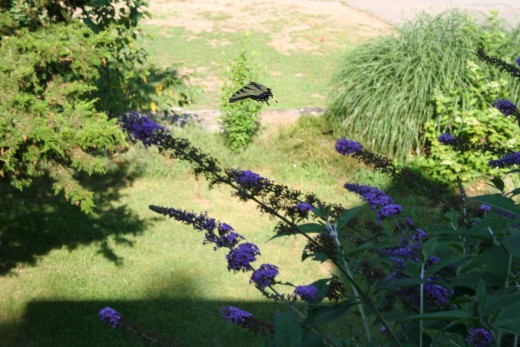
The cones on this butterfly bush blossom in three colors from light to dark purple.
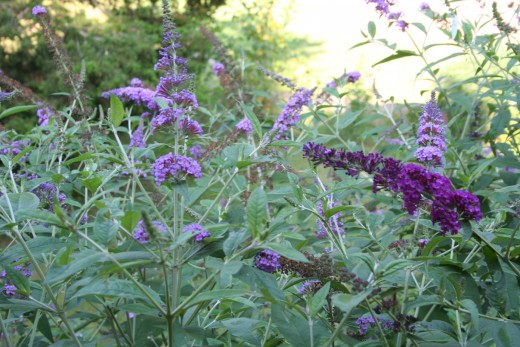
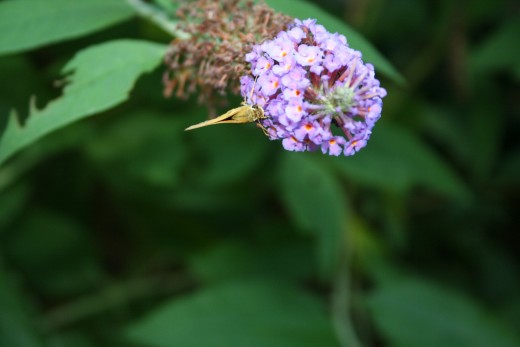
Conclusion.
The tips and suggestions in this article are derived from my own personal experience.
Gardening is so relaxing, even though it's a lot of work.
All gardens are different. They are just as unique as the birds, bees, and butterflies that visit them.

